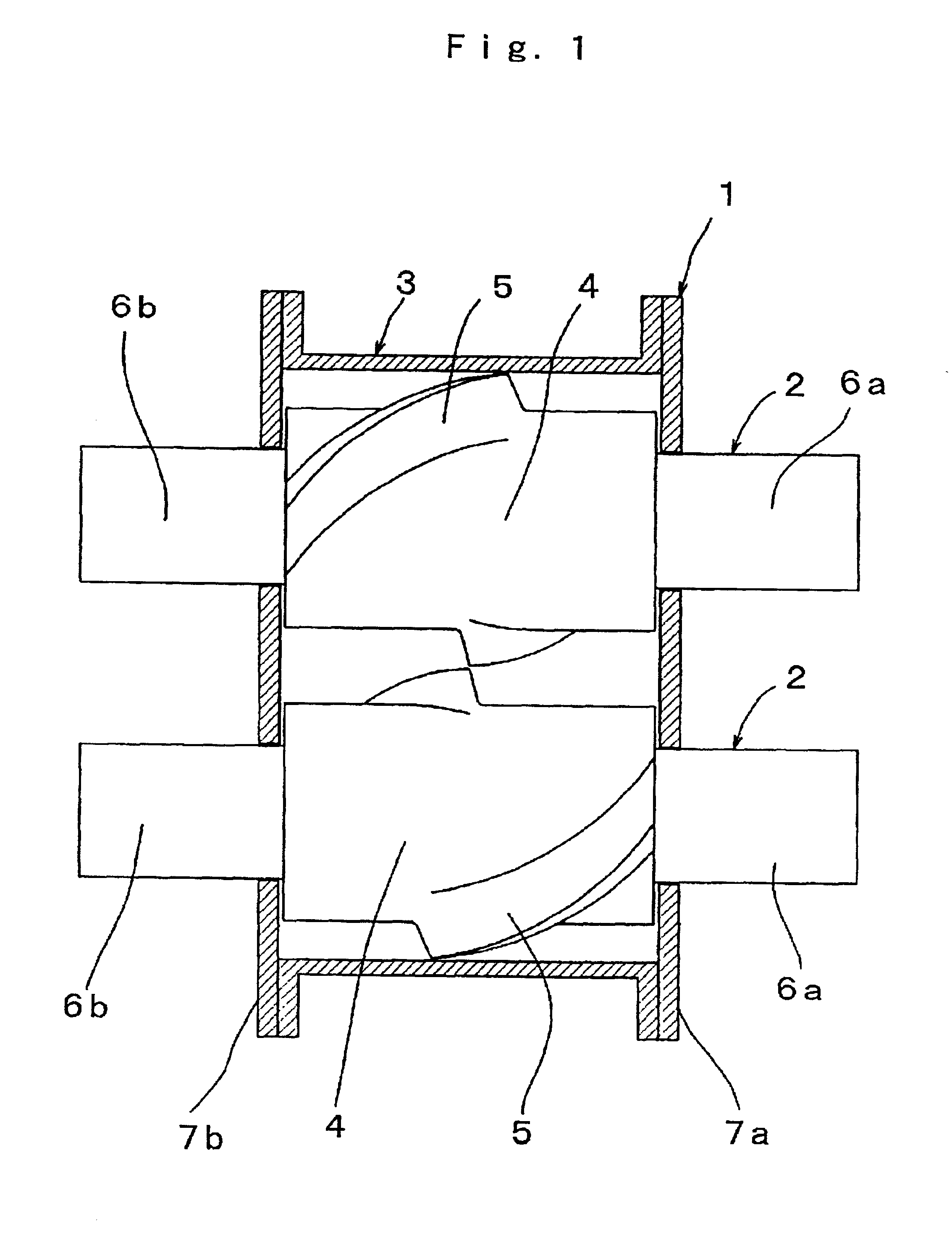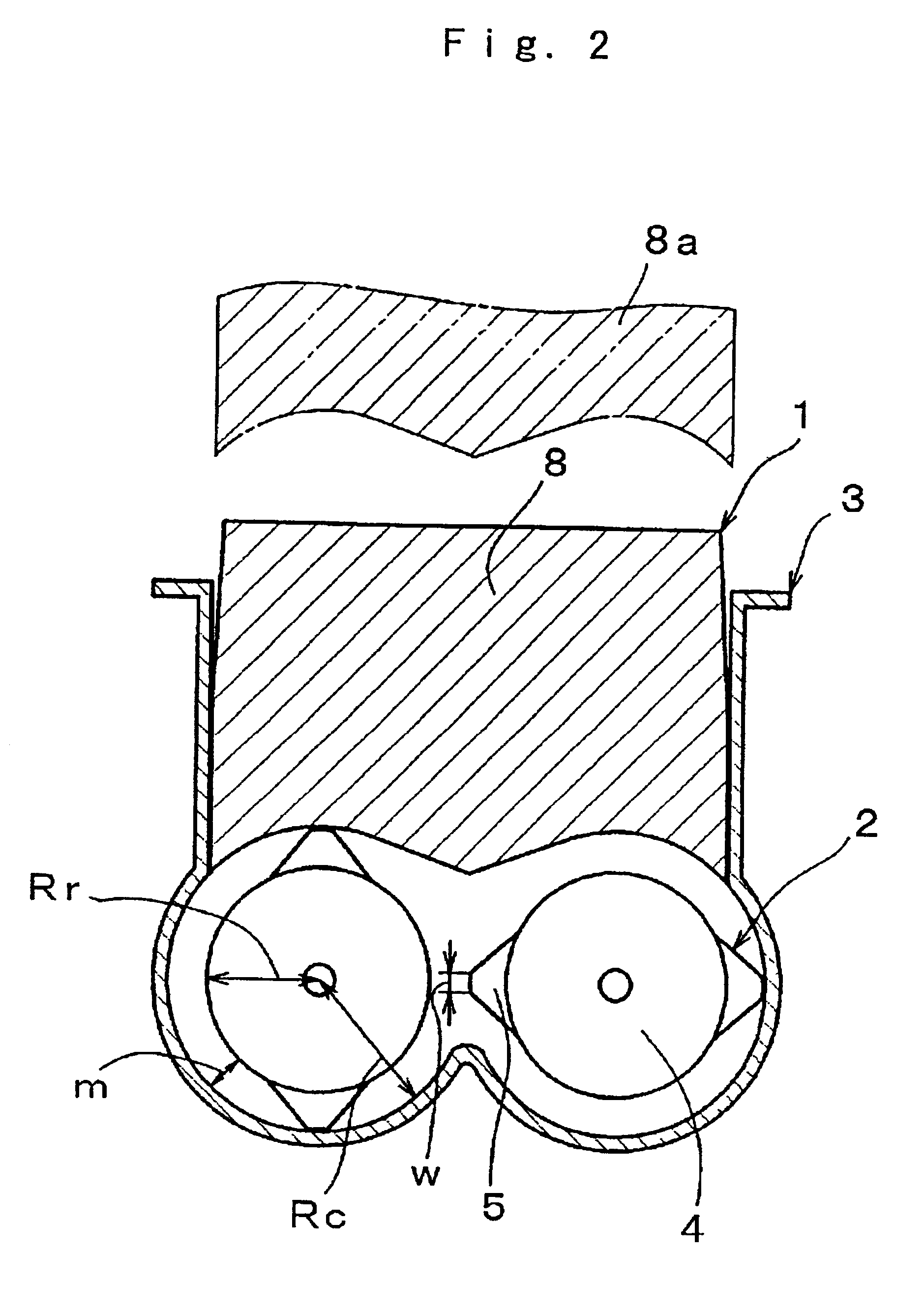Closed kneader
a closed kneading and kneading technology, which is applied in the direction of clay mixing apparatus, mixing/kneading with horizontally mounted tools, transportation and packaging, etc., can solve the problems of high temperature of kneaded material at the end of primary kneading, and constituted a productivity obstruction factor, so as to reduce the thickness of kneaded material and achieve sufficient cooling
- Summary
- Abstract
- Description
- Claims
- Application Information
AI Technical Summary
Benefits of technology
Problems solved by technology
Method used
Image
Examples
Embodiment Construction
[0024]The present invention will be explained hereafter based on the embodiment indicated in FIG. 1 to FIG. 3. In the drawings, a closed kneader 1 is an example of a pressure kneader, the rotor of which is mounted tangentially. In the same way as the known mechanism (the same symbol will be used for the same structure and repeated explanation will be omitted), the present invention is comprised of a chamber 3 for storing kneaded material, a pair of rotors 2, 2, which are provided at both ends with rotor drive shafts 6a, 6b passing through side walls 7a, 7b of the chamber 3 and which consist of a rotor shaft 4 forming a rotor blade 5 for kneading the kneaded material in the chamber 3 and a pressure cover 8.
[0025]The rotor blades 5, 5 on the pair of rotors 2, 2 are preferably disposed tangentially in a way so as not to overlap with each other, as shown in FIG. 1.
[0026]However, the closed kneader 1 according to the present invention is realized by keeping the proportion of the radius o...
PUM
| Property | Measurement | Unit |
|---|---|---|
| Fraction | aaaaa | aaaaa |
| Temperature | aaaaa | aaaaa |
| Radius | aaaaa | aaaaa |
Abstract
Description
Claims
Application Information
 Login to View More
Login to View More - R&D
- Intellectual Property
- Life Sciences
- Materials
- Tech Scout
- Unparalleled Data Quality
- Higher Quality Content
- 60% Fewer Hallucinations
Browse by: Latest US Patents, China's latest patents, Technical Efficacy Thesaurus, Application Domain, Technology Topic, Popular Technical Reports.
© 2025 PatSnap. All rights reserved.Legal|Privacy policy|Modern Slavery Act Transparency Statement|Sitemap|About US| Contact US: help@patsnap.com



